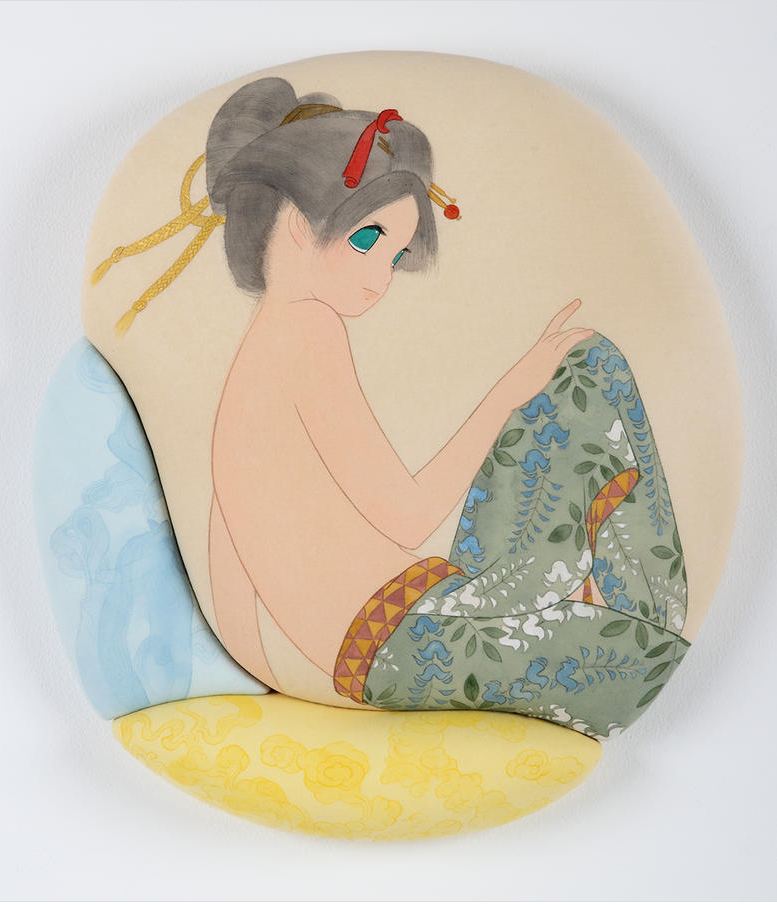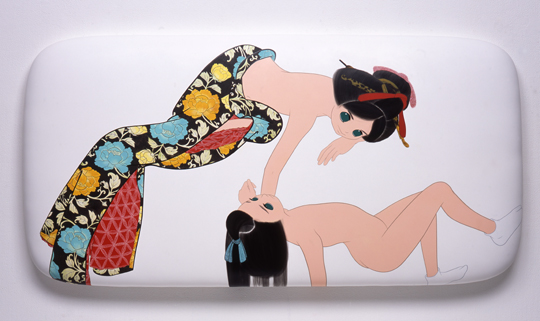I love Ai
We just saw an exhibit of Ai Yamaguchi, currently showing at Joshua Liner gallery in Chelsea, NYC. Her delicate work, somewhere between Ukiyoe and comics appeals to the anime generation, but it goes far beyond. When you get closer, you will see hidden textures and other interesting nuances.
She paints intriguing portraits of young prostitutes in the Edo period. But their facial expression is as if they are in another world — almost like that of a super heroine, while still appearing innocent and sincere. Never ennui like as in Ukiyoe. The titles are inspired by ancient poetry, which adds even more intrigue, as I do not understand the old language, but it sounds very cool.
Adding to the many nuances, they are painted on futon canvas. The frame is literally wrapped by a blanket! They look more like ceramics or plaster than canvas, and it transforms this wonderful two dimensional work to 3D.
Can’t wait for the day to hang a futon on my wall.
Joshua Linerギャラリーで山口藍の作品を見て来た。やっぱりすき(ハート)。コミックスを山ほど読んでで育った私が単純にかわいい〜と思う絵でもあり、とても今っぽいテクスチャーの良さとか、神経を使う細かな手作業が伺える所とか、とても好みです。
なんだか複雑だけど音の面白いタイトルが多いのもいい(パートナーには、意味不明〜と言わざるを得なかったのですが、古い詩を引用しているらしい)。浮世絵と漫画の中間のようなフラットな絵ですが、近づくと細かなテクスチャーが発見できたり。
彼女の作品は遊女を描いているとの事ですが、女の子たちは漫画のヒロインのように凛々しくて、かっこいい。浮世絵や日本映画で見るようなけだるい感じがなくて清潔な感じなのも不思議感を倍増。
作家の写真を見ると、なんと畳の上で制作されているのです。てっきりモダンなスタジオで同時進行、かと思うけれど。そこもユニーク。
布団キャンバスというのも面白くて、遠目に見ると石膏か陶器に見えますが、フレームを毛布でくるんでつくるそうです。触りたくなる。。。2次元を3次元のモノにしている感があります。
自宅の白い壁に布団を飾ることができる日はいつ。




